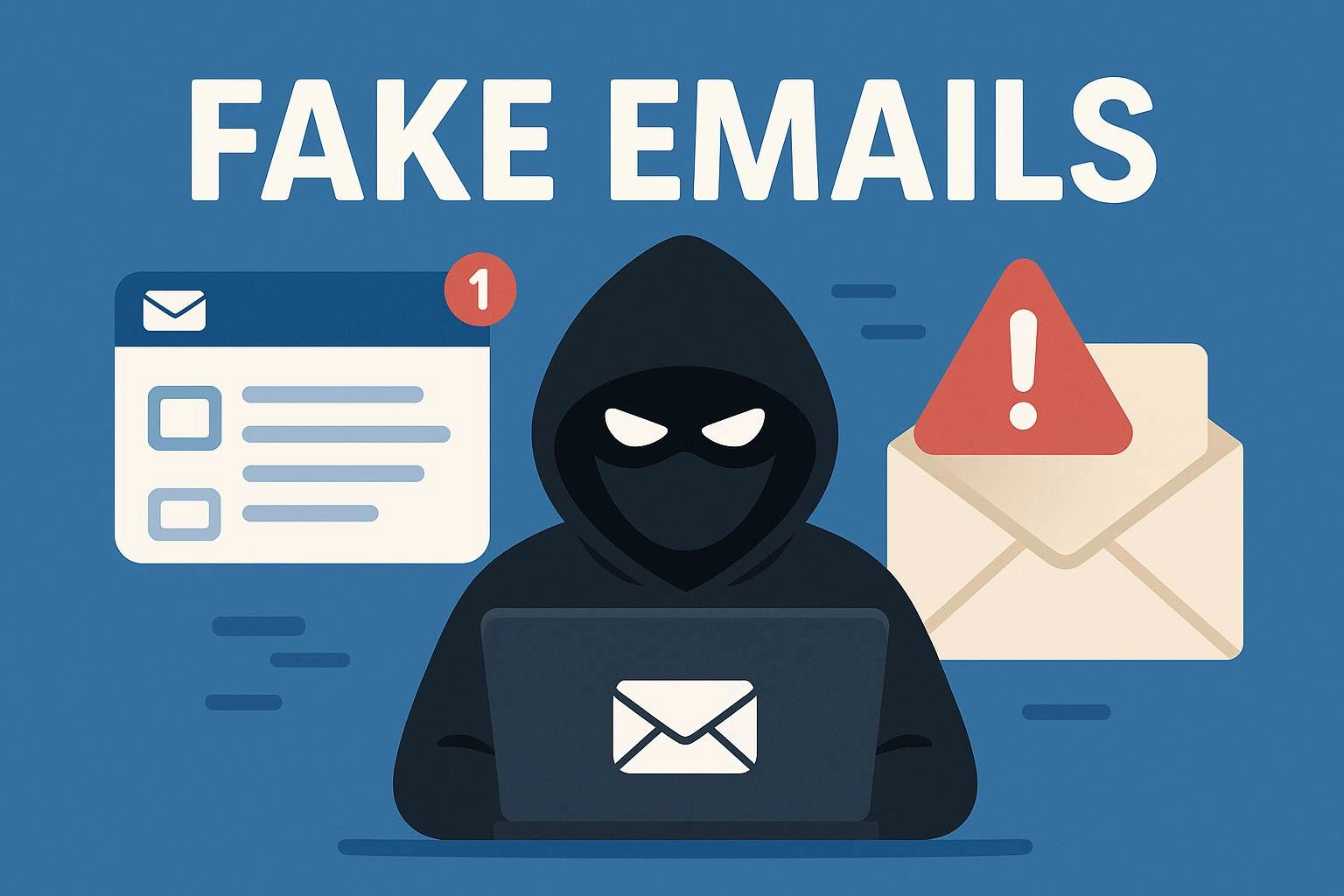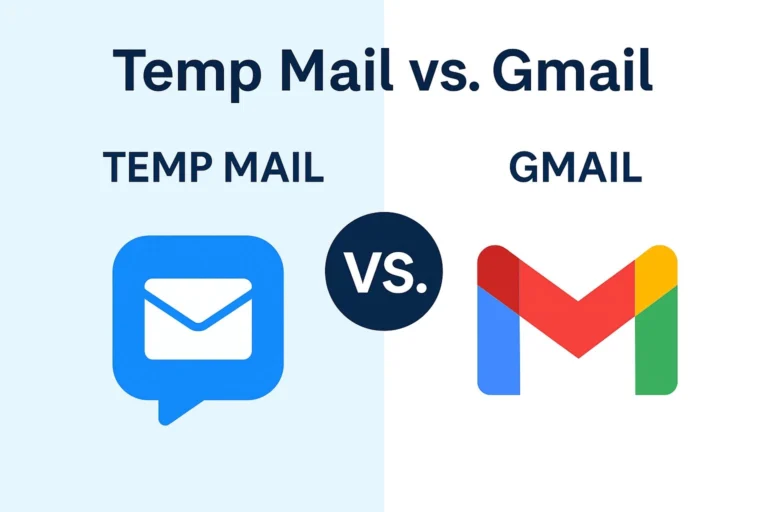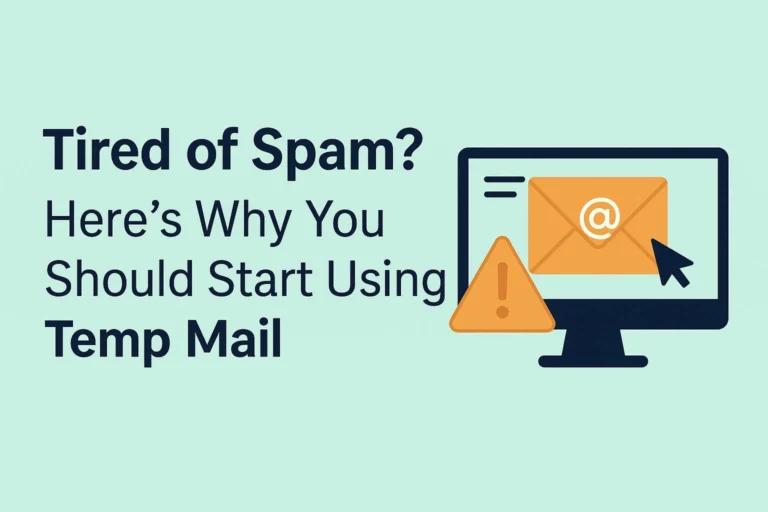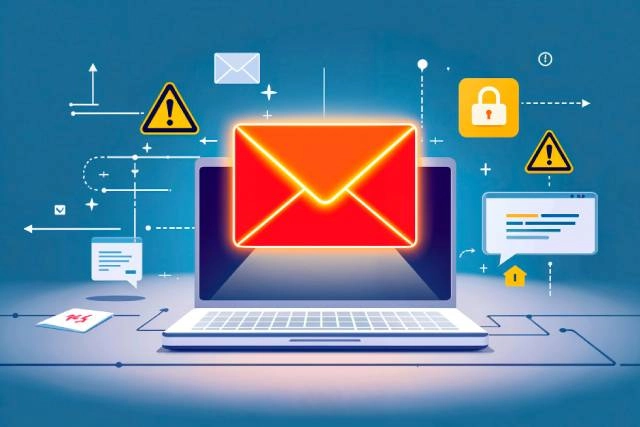Introduction:
A fake email is also known as a disposable email. It is designed to get someone’s sensitive information through email. A person receives an email that looks like an email from a legitimate resource, such as a bank or government agency, to gain the user’s trust. This fake email may include malicious links.
The main purpose of fake emails is to steal someone’s personal or sensitive information, install malware, or compromise the users’ security.
How do Fake Emails Work?
- Social Engineering:
Nowadays fake emails rely on social engineering that urges the user to take some specific steps, like clicking on emails that will have a malicious link, but the user will not be aware of it.
- Misleading Information:
You will know fake emails contain false or misleading information, like urgent warnings related to accounts, and ask users to collect sensitive data.
- Malicious attachments:
Fake emails often contain harmful links or files that can install malware on your device.
- Spoofing:
According to the Federal Trade Commission, attackers often forge the sender’s address to make the email appear as if it’s coming from a trusted source.
Common Fake Email Scams
- Account Verification:
The recipient gets a deceptive email designed to resemble one from a legitimate company. The email contains a message like: “Verify your account, otherwise it will be blocked.” It also provides a link to the user, and when the user clicks on this link, a fake website opens.
When the user enters information like username, password, and other personal information, the scammer steals the information.
- Password Reset:
The user receives a fake email that contains a message about a password reset. As the user clicks on the provided link, it asks the user to enter an old and a new password. Once the user enters an old password, the scammer gets it and hacks the account.
- Financial Scams:
The users receive a fake email that has a fake message that looks like it is from a bank, PayPal, or any other money-related service. This fake email warns the user about their account-related information, such as a problem with the user account or unusual activity is detected, etc.
This fake email gives a fake link to the user to fix it or log in. When the user clicks on this fake link, a fake website is opened, which asks the user to enter credentials such as card number, bank info, etc. A scammer steals that info and may take your money from the user’s account.
How to Spot a Fake Email?
- Grammar Mistakes in Fake Emails:
One of the easiest ways to spot fake emails is by checking the grammar and spelling. Fake emails contain grammatical mistakes.
- Generic Greeting in Fake Emails:
Fake emails contain generic greetings like “Dear Customer” instead of using the user’s real name because they don’t know the user’s name, so it is also the best way to clue them in that the email is fake.
- Immediate Actions:
In fake emails, the scammers also make the users panic by scaring them, so users immediately respond to that fake email. The fake email shows alarmist messages like “Your account is compromised, immediate action required,” etc.
- Suspicious Links in Fake Emails:
One of the ways to spot fake emails is the link that looks strange or different.
- Weird Email Address:
To spot fake emails, one of the ways is to figure out their address. Fake emails contain weird email addresses.
What to Do in Case of a Fake Email?
- Don’t Click Links: If you think the email might be fake, don’t ever click on the link because this link may lead to fake websites where your sensitive information may be stolen. The link may contain viruses that download malware to your computer.
- Don’t Share Sensitive Information:
If you think the email is fake, don’t provide personal or sensitive information because fake emails would ask for your username, password, credit card numbers, login credentials, etc. Once the scammer gets all this information, he can hack your account, take money from your account, and steal your ID.
- Report Fake Emails:
Once you spot a fake email, immediately report that fake email. It could help cybersecurity track the fake websites and shut them down. It could also alert the companies (like [PayPal](https://www.paypal.com)) being impersonated.
- Contact the Legitimate Source:
If you’re in doubt about whether the source is legitimate, the simple solution is to contact the legitimate company. If the email is real, you will get confirmation from the company, but if it’s a fake email, the company will be aware of the scam and will alert other customers.
Conclusion:
In today’s digital age, fake emails are widely used by cybercriminals to steal sensitive information from people. These fake emails look genuine, and it feels like these fake emails are from legitimate sources such as banking or government agencies. But the primary goal of the scammer is to manipulate users to click the fake links or install malware on the user’s computer.
If a user clicks on the fake link, it will open a fake website, and when the user signs in, the scammer will get all the personal information of the user, and as a result, the user’s account will be hacked or their money account will be cleaned by the scammer.
It’s very difficult to detect fake emails because these scams have grown more sophisticated nowadays. But with a little effort, users can prevent falling victim to such fake links or fake emails.
Final Warning
Temporary or fake emails are like digital fireworks, useful for short-term needs, but dangerous if mishandled.
Need a secure disposable email right now?
→ Try TempMailss




